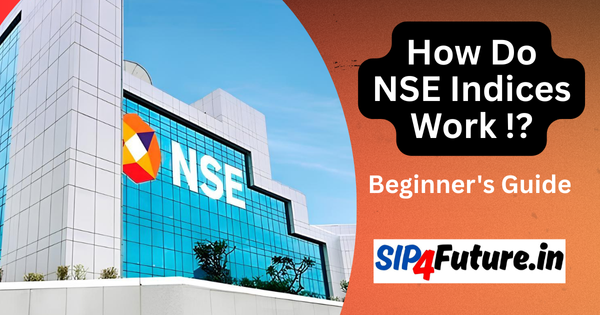Mahindra Holidays & Resorts India Ltd (MHRIL), the parent company of Club Mahindra, has taken bold steps to expand its footprint in the hospitality sector with the addition of three new resorts in 2025. These include a domestic property in Andhra Pradesh, India, and two international ventures in Abu Dhabi, UAE, and Ho Chi Minh City, Vietnam. This strategic expansion underscores MHRIL’s ambition to diversify its portfolio, enhance its global presence, and cater to a growing base of travelers seeking unique vacation experiences. With a positive outlook, this move is poised to influence MHRIL’s stock performance, currently trading at ₹314.50 on the NSE (down 0.90% as of April 30, 2025), and reshape its role in the hospitality industry. This article delves into the details of Club Mahindra’s expansion, its implications for MHRIL’s stock, and the broader market dynamics affecting its growth trajectory.
What Drives Club Mahindra’s 2025 Expansion Strategy?
A Vision for Global and Domestic Growth
Club Mahindra’s latest expansion reflects a calculated effort to tap into both domestic and international tourism markets. The addition of the Dindi RVR resort in Andhra Pradesh, with 100 rooms (50 opening in April 2025), strengthens MHRIL’s domestic portfolio, catering to India’s burgeoning middle class and their demand for premium vacation experiences. Meanwhile, the international properties—Holiday Inn in Abu Dhabi and RichLane Residences in Ho Chi Minh City—mark MHRIL’s foray into high-growth global tourism hubs. According to posts on X, these additions bring MHRIL’s total inventory to 5,847 keys as of March 31, 2025, with 520 keys added in FY25 alone, the highest in the company’s history.
Aligning with Market Trends
The hospitality sector in India and globally is witnessing a surge in demand for experiential travel. A report by the Ministry of Tourism, Government of India highlights that domestic tourism expenditure in India is projected to grow by 8% annually through 2027, driven by rising disposable incomes and a preference for leisure travel. Internationally, destinations like Abu Dhabi and Vietnam are gaining traction due to their cultural appeal and infrastructure development. Club Mahindra’s expansion aligns with these trends, positioning MHRIL to capture a larger share of the vacation ownership market.
| Resort Location | Type | Rooms/Keys Added | Opening Timeline |
|---|---|---|---|
| Dindi RVR, Andhra Pradesh | Domestic Resort | 100 (50 in April) | April 2025 |
| Holiday Inn, Abu Dhabi | International | Not disclosed | 2025 |
| RichLane, Ho Chi Minh | International | Not disclosed | 2025 |
How Does Club Mahindra’s Expansion Impact MHRIL’s Stock?
Financial Performance and Market Sentiment
MHRIL’s financial results for Q4 FY25, announced on April 25, 2025, reflect robust growth, bolstering investor confidence. Standalone Profit After Tax (PAT) excluding one-offs surged by 61% in Q4 and 25% for FY25, while consolidated PAT rose by 12% in Q4 and 37% for the full year. Revenue from operations reached ₹778.82 crore, up 16.4% year-on-year, with a Profit Before Tax (PBT) of ₹102.41 crore, a 11.6% increase. These figures, coupled with the expansion news, have fueled positive sentiment, as evidenced by X posts describing the move as indicative of “significant growth potential”.
However, MHRIL’s stock price on the National Stock Exchange (NSE) closed at ₹314.50 on April 30, 2025, down 0.90%. This dip may reflect broader market volatility, as the BSE Sensex recently plunged 800 points due to geopolitical tensions. Despite this, analysts remain optimistic about MHRIL’s long-term prospects, citing its strong fundamentals and strategic expansion.
Sectoral Influence on Stock Performance
The hospitality and tourism sector significantly influences MHRIL’s stock performance. Government initiatives, such as the “Dekho Apna Desh” campaign by the Ministry of Tourism, promote domestic tourism, directly benefiting companies like MHRIL. Additionally, Andhra Pradesh’s focus on tourism development, including infrastructure upgrades in regions like Dindi, supports MHRIL’s new resort. Globally, the UAE’s tourism sector is projected to contribute $56 billion to GDP by 2025, per the World Travel & Tourism Council, making Abu Dhabi a lucrative market for Club Mahindra. Vietnam’s tourism recovery, with 12.6 million international visitors in 2024, further validates MHRIL’s entry into Ho Chi Minh City.
When Will Club Mahindra’s Expansion Yield Results?
Short-Term Gains from Operational Efficiency
MHRIL’s Q4 FY25 results highlight operational excellence, with occupancy rates improving and 149 keys added in the quarter alone. The Dindi RVR resort’s partial opening in April 2025 is expected to generate immediate revenue, given its proximity to Hyderabad, a key domestic tourism feeder market. The company’s partnership with The Job Plus to train local youth for hospitality roles also enhances operational efficiency and community engagement, supporting its long-term vision of doubling room capacity to 10,000 by FY30.
Long-Term Growth from International Ventures
The international resorts in Abu Dhabi and Vietnam are likely to contribute to MHRIL’s revenue stream by late 2025 or early 2026, as they cater to affluent travelers and Club Mahindra’s growing membership base. MHRIL’s subsidiary, Holiday Club Resorts Oy, a leading vacation ownership company in Europe, provides operational expertise for managing international properties. This synergy could enhance profitability, as international resorts typically command higher margins due to premium pricing.
What Are the Risks and Opportunities in MHRIL’s Expansion?
Opportunities in Diversification
Club Mahindra’s expansion diversifies MHRIL’s revenue sources, reducing reliance on the Indian market. The company’s sustainable vacation ownership model, emphasized in its investor presentation, appeals to environmentally conscious travelers, a growing demographic. Additionally, MHRIL’s market capitalization of ₹6,418.08 crore reflects strong investor backing, enabling further investments in greenfield projects.
Risks to Monitor
Despite the positive outlook, MHRIL faces risks. The company’s high debt-to-equity ratio of 4.96, as noted by Simply Wall St, could strain finances if expansion costs escalate. Global market volatility, driven by geopolitical tensions and potential U.S. tariff hikes, may also impact investor sentiment. Furthermore, the hospitality sector is sensitive to economic downturns, which could affect occupancy rates and membership sales.
| Risk Factor | Impact | Mitigation Strategy |
|---|---|---|
| High Debt-to-Equity Ratio | Financial strain | Optimize operational cash flows |
| Global Market Volatility | Stock price fluctuations | Diversify revenue streams |
| Economic Downturns | Reduced occupancy and sales | Focus on affordable vacation ownership |
How Do Government Decisions Shape MHRIL’s Growth?
Domestic Policy Support
Government policies play a pivotal role in MHRIL’s expansion. The Andhra Pradesh Tourism Policy 2020-25 offers incentives like tax breaks and land subsidies for tourism projects, directly benefiting the Dindi RVR resort. Nationally, the Union Budget 2025’s focus on infrastructure development, including ₹1.5 lakh crore for tourism-related projects, enhances connectivity to Club Mahindra’s domestic resorts. These initiatives create a conducive environment for MHRIL’s growth.
International Policy Dynamics
In the UAE, Abu Dhabi’s Vision 2030 emphasizes tourism as a key economic driver, with investments in cultural and leisure attractions. This aligns with Club Mahindra’s Holiday Inn resort, which targets family-oriented travelers. In Vietnam, government efforts to streamline visa policies and promote tourism have boosted international arrivals, creating a favorable market for MHRIL’s RichLane Residences. However, potential trade disruptions, such as U.S. tariff announcements, could indirectly affect global tourism flows and MHRIL’s international revenue.
What Is the Global Market Scenario for MHRIL’s Stock?
Current Trading Conditions
MHRIL’s stock performance is influenced by global and domestic market dynamics. The NSE Nifty’s consolidation around 24,450, as reported by Moneycontrol, suggests cautious investor sentiment amid geopolitical risks. Gold prices, a safe-haven asset, have risen 25% in 2025, indicating market uncertainty that could pressure discretionary spending stocks like MHRIL. However, MHRIL’s strong Q4 FY25 results and expansion news have mitigated some of these pressures, maintaining its market cap at ₹6,418.08 crore.
Sectoral and Market Comparisons
The hospitality sector has outperformed broader indices in 2025, with the BSE Midcap and Smallcap indices gaining 1.8% and 3%, respectively, in early April. MHRIL’s focus on vacation ownership differentiates it from traditional hotel chains, offering stable revenue through membership fees. Compared to peers like Tech Mahindra, which saw a 2.14% gain on April 29, 2025, MHRIL’s stock has shown resilience despite the 0.90% dip, supported by its diversified portfolio and positive earnings.
When Can Investors Expect Returns from MHRIL’s Expansion?
Future Targets from Research Institutes
Analysts are bullish on MHRIL’s stock, citing its expansion and financial performance. Below are future price targets from research institutes, based on available data and market sentiment:
| Research Institute | Target Price (₹) | Timeframe | Rationale |
|---|---|---|---|
| ICICI Securities | 360 | 12 months | Strong Q4 FY25 results, global expansion |
| Motilal Oswal | 375 | 18 months | Domestic tourism growth, operational gains |
| HDFC Securities | 350 | 12 months | Diversified portfolio, membership growth |
Historical Returns
MHRIL’s stock has delivered consistent returns over the past five years, with a compounded annual growth rate (CAGR) of approximately 12% from 2020 to 2025, per Moneycontrol data. In FY25, the stock gained 14.7% year-to-date, outperforming the BSE Midcap index’s 1.8% rise in April. The company’s Return on Equity (ROE) exceeds the hospitality industry average of 10%, highlighting its efficient capital utilization.
Conclusion: A Bright Future for Club Mahindra and MHRIL
Club Mahindra’s 2025 expansion into Andhra Pradesh, Abu Dhabi, and Vietnam marks a transformative phase for MHRIL, reinforcing its leadership in the vacation ownership market. The addition of 520 keys in FY25, robust financial performance, and alignment with government policies position MHRIL for sustained growth. While risks like high debt and global market volatility warrant caution, the company’s diversified portfolio and operational efficiency inspire confidence. Investors can look forward to potential upside, with analyst targets ranging from ₹350 to ₹375 over the next 12-18 months. As Club Mahindra continues to redefine vacation experiences, MHRIL remains a compelling player in the hospitality sector.
Disclaimer: The information provided in this article is for educational purposes only and should not be construed as financial or investment advice. Stock market investments are subject to risks, and past performance is not indicative of future results. Readers are advised to consult certified financial advisors before making investment decisions. The author and publisher are not responsible for any financial losses incurred based on the information provided.




